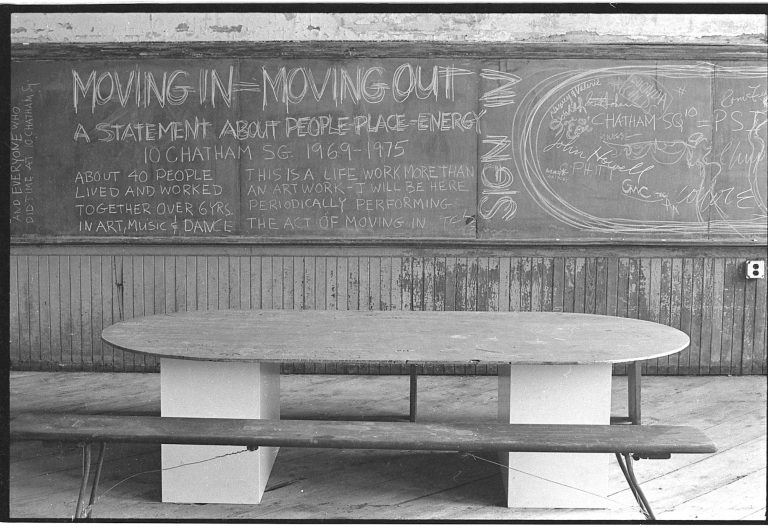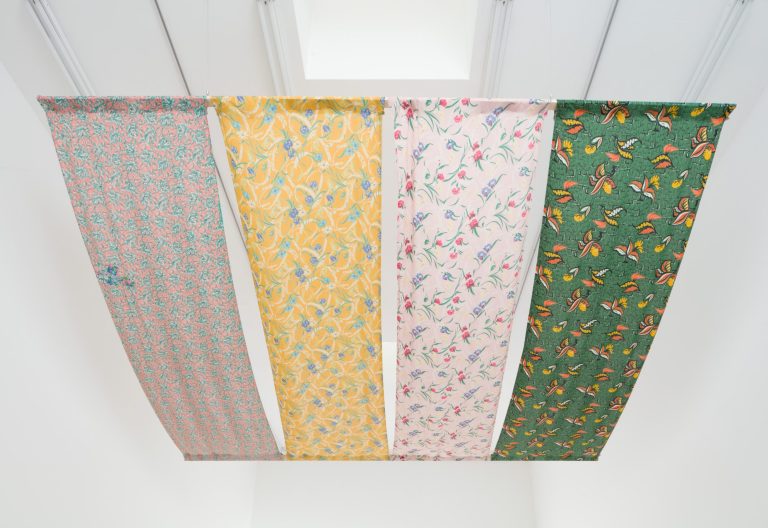Ogden Museum of Southern Art
925 Camp St
New Orleans, LA 70130
504.539.9600 | HOURS
925 Camp St
New Orleans, LA 70130
504.539.9600 | HOURS
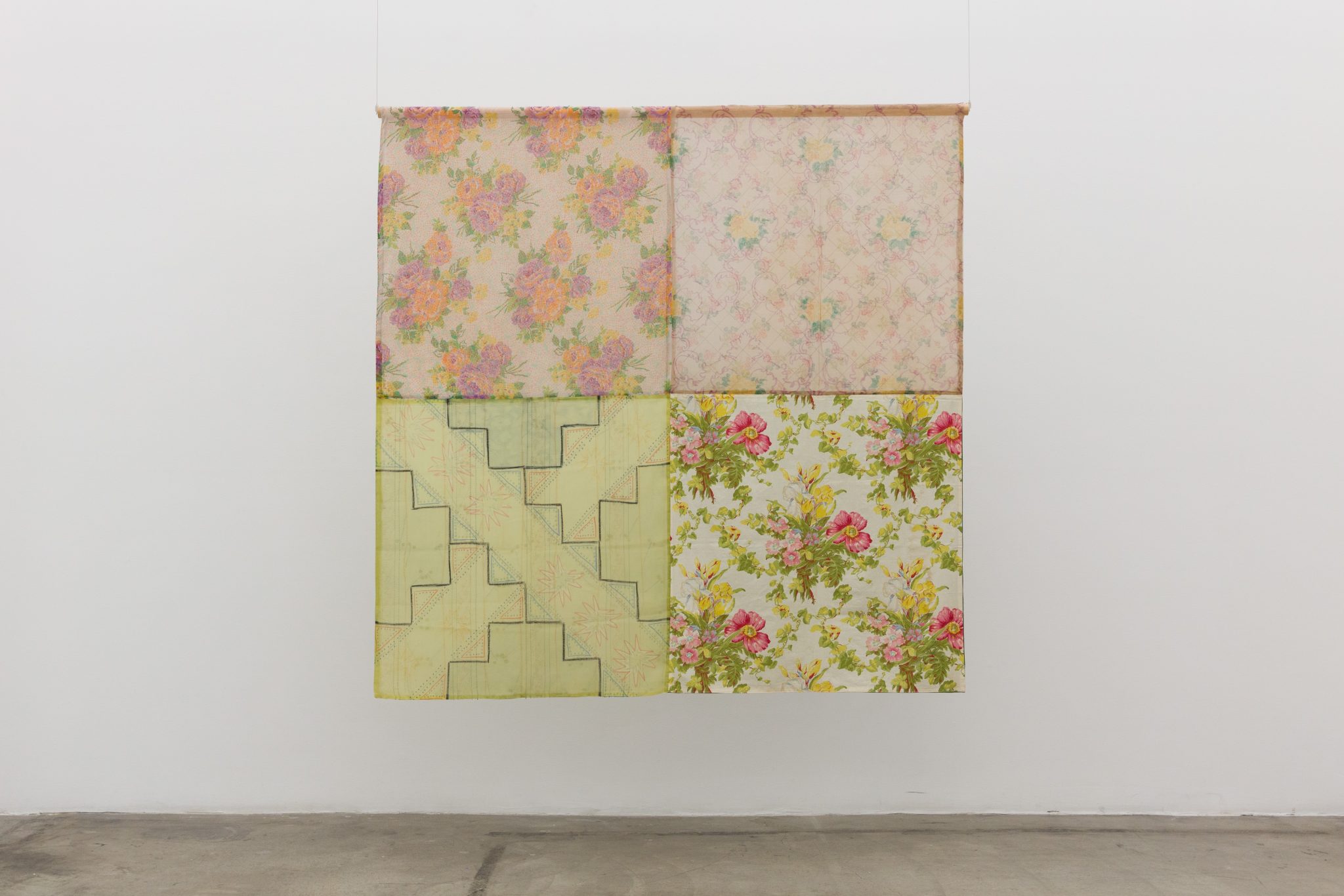
Tina Girouard, Screen 4, c. 1974-1975, 38.5 x 36.5 in, Mixed media on fabric. Image courtesy of Anat Ebgi Gallery (Los Angeles, CA) and the Estate of Tina Girouard, Artist Rights Society (ARS), New York
Presenting Sponsor
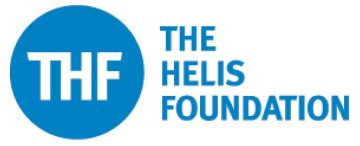
Major Sponsors
Teiger Foundation
The Kaleta A. Doolin Foundation
The Stolbun Family
The Ruth Foundation for the Arts
The Azby Fund
The Robert R. McCormick Foundation
Stephen Reily and Emily Bingham
Contributing Sponsors
The Ella West Freeman Foundation
Supporting Sponsors
New Orleans Center for the Gulf South
Host Committee
Wayne Amedee
Anonymous
Dathel & Tommy Coleman
Kaye Courington
Dale Fleishmann – in honor of Charles Urstadt
Gabrielle Mizrahi
Carla & Cleophus Thomas
Terese & William Winslow
Organized by Rivers Institute for Contemporary Art & Thought and presented in partnership with Ogden Museum of Southern Art, Tina Girouard: SIGN-IN is the first comprehensive posthumous retrospective for the Louisiana-born artist, Tina Girouard (b. 1946 – d. 2020), and showcases over forty years of the artist’s practice.
Known as a collaborator in artist communities in New York, New York, Lafayette, Louisiana and Port-au-Prince, Haiti, Girouard’s work tells an expansive story of American art. A vanguard artist in the fields of performance, film, textile, printmaking and community-based practices, Girouard’s animated work explores the different places she called home.
Born in DeQuincy, Louisiana in 1946, Girouard received a B.F.A. in Fine Art from the University of Southwest Louisiana in 1968 and moved to New York City in 1969 with the Louisiana-born saxophonist, composer and collaborator Richard “Dickie” Landry. Upon moving to New York, Girouard and Landry moved into an apartment at 10 Chatham Square in Chinatown with the painter Mary Heilmann. The trio’s home soon became a center of avant-garde art, music and performance in New York as well as a meeting ground for other Louisiana-born artists working in the Post-Minimalist scene, such as Lynda Benglis and Keith Sonnier.
While living in New York, Girouard shaped many significant postwar avant-garde groups and art movements including: The Anarchitecture group; The interdisciplinary experiments in the lofts at 112 Greene Street; The artist-run restaurant FOOD in SoHo; and the Pattern & Decoration movement. After a devastating studio fire in 1978, Girouard and Landry moved back to Louisiana and created a studio near Lafayette. From this new home, Girouard began connecting and collaborating with local artists in the region as a way of supporting Louisiana francophone culture. This eventually led to the founding of the Artists’ Alliance in Lafayette in 1986 and the establishment of the Festival International de Louisiane–an international festival that brought together music, dance, theater, visual and culinary arts from francophone Europe, Africa, the Americas and the Caribbean. It was during these projects that Girouard became interested and invested in Haitian art.
In 1990, Girouard moved to Port-au-Prince, Haiti and established a studio there, which she kept until 1995. During that time, Girouard studied alongside Haitian artists and learned to make traditional vodou flags, collaborating extensively with Antoine Oleyant and Georges Valris.
Tina Girouard: SIGN-IN has been shaped through a close partnership with the Estate of Tina Girouard, which provided access to Girouard’s archival papers. Additional insight was provided through conversations and interviews with many of Girouard’s most trusted collaborators and peers, including Laurie Anderson, Barbara Dilley, Deborah Hay, David Bradshaw and Bob Tannen. The exhibition has thoughtfully been designed to engage all these access points in order to demonstrate recapitulations, overlaps and continuities across decades of practice in different mediums and locations.
Major works featured in this exhibition include: a re-creation of the participatory installation Moving In-Moving Out-Sign-In from the inaugural 1976 exhibition Rooms at MoMA P.S. 1, which recorded all of the artists, musicians and collaborators tied to the experiments at work in Girouard’s apartment at 10 Chatham Square in New York; Recreation of the textile and architectural elements of Girouard’s first solo exhibition at 112 Greene Street Four Stages (1972), composed of fabric bolds known as Solomon’s Lot and found wood from empty warehouses in 1970s SoHo; Major works from her Wallpaper and Test Pattern textile series, which foregrounds Girouard’s investments in domestic labor and materials associated with women’s lives; The screening of the film Pinwheel (1977), originally commissioned for the New Orleans Museum of Art’s exhibition Five From Louisiana that featured work by Girouard, Robert Rauschenberg, Keith Sonnier, Lynda Benglis, and Richard Landry; And the presentation of selections from Girouard’s Maintenance films (1970s), which presents the artist’s early and innovative experimentations with video art, the democratization of new filmic technologies, and her engagement with gender politics. An expansive assembly of Girouard’s Glyph and Pictionary drawings on paper will be gathered together for the first time in a public presentation, while major examples of Girouard’s beaded vodou flags, including Legba and Toussaint, which stand as important examples of the artist’s collaboration with Haitian beadwork artists in the atelier in Port-au-Prince, will be featured.
Tina Girouard: SIGN-IN is curated by Andrea Andersson (Founding Director and Chief Curator, Rivers) and Jordan Amirkhani (Curator, Rivers) with Jade Flint (Assistant Curator, Rivers). After opening at Ogden Museum of Southern Art in March 2024, the exhibition will travel to the Center for Art, Research, and Alliances in New York in Fall 2024.
Saturday, March 23 | 10 a.m. to 2 p.m.
Free Family Day: Celebrating Tina Girouard: SIGN-IN
Click here to learn more!
Saturday, April 13 | 10 a.m. to 2 p.m.
Artist Workshop with Marwan Pleasant
Click here to learn more!
Wednesday, May 8 | 6 to 8 p.m.
Craft Happy Hour: Beading with Marwan Pleasant
Click here to learn more!
Friday, May 10 | 6 to 8 p.m.
Marking Ordinary Extraordinary: A Free Evening Celebrating Tina Girouard
Click here to learn more!
Saturday, May 11 | 10 a.m. to 1 p.m.
Artist Workshop: Block Printing for Textiles with ricRACK
Click here to learn more!
Saturday, May 18 | 10 a.m. to 1 p.m.
Artist Workshop with Artivism Dance Theatre
Click here to learn more!
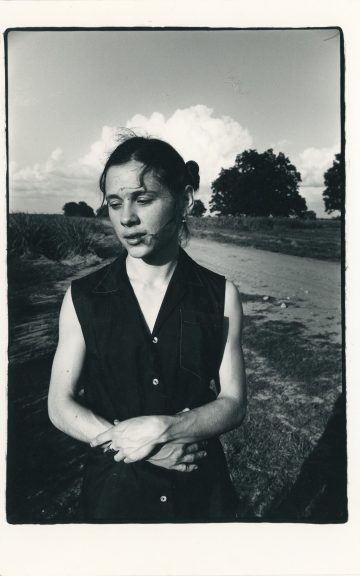
Gerard E. Murrell, On the Cane Break: Portrait of Tina Girouard, Cecilia, Louisiana, 1976, photograph, image courtesy of the Estate of Tina Girouard, Artist Rights Society (ARS), New York
Cynthia Marie “Tina” Girouard (b. 1946, d. 2020) is a distinguished multi-disciplinary artist recognized for her seminal work in performance, video/film and site-specific installation using non-traditional media such as wallpaper, linoleum, textiles, sequins and steel. Girouard is the recipient of numerous fellowships and grants for her work, including invitations to international events such as Documenta 6 in Germany, the Venice Biennale, the Paris Biennale and Frieze New York. Girouard is best known for her work and involvement across a range of American avant-garde movements and communities in 1960’s and 1970’s New York, including Post-Minimalism, Anarchitecture and the Pattern & Decoration Movement.
Born in DeQuincy, Louisiana to Whitney Lewis Girouard (an agricultural engineer) and Yvelle Therior Girouard (a special education teacher) in 1946, Girouard received a B.F.A. in Fine Art from the University of Southwest Louisiana (now the University of Louisiana-Lafayette) in 1968 and moved to New York City in 1969 with the Louisiana-born saxophonist, composer and collaborator Richard “Dickie” Landry. Girouard and Landry married in 1971. Upon moving to New York, Girouard and Landry moved into an apartment at 10 Chatham Square in Chinatown with the painter Mary Heilmann. The trio’s home soon became a center of avant-garde art, music and performance in New York as well as a meeting ground for other Louisiana-born artists working in the Post-Minimalist scene, such as Lynda Benglis and Keith Sonnier.
Girouard was also an early founder and contributor to 112 Greene Street (known as White Columns by 1979), a 4,000-square foot performance space located in a former rag salvaging factory in SoHo just one mile away from her Chatham Square apartment and 112 Greene. Founded by the sculptor Jeffrey Lew and dancer Rachel Wood in 1970, 112 Greene Street hosted early experimental performances and exhibitions by Gordon Matta-Clark, Richard Serra, Vito Acconci, Laurie Anderson and Chris Burden among others. Eclecticism was encouraged with performances often emphasizing the space and scale of the room: artist Charles Simmons covered the entire basement floor with clay; Matta-Clark jack-hammered the concrete floor to expose a room-size section of earth below; while Acconci enclosed himself in the space with a live rooster with Girouard tasked to capture the animal.
112 Greene Street became a significant site of performance and presentation for Girouard, and she debuted a number of important early works there, including Air Space Stage (1972), a large-scale installation that used four sheets of patterned fabric suspended gracefully from the ceiling to create a ‘space-within-a-space’ that shifted according to the light, time of day, and weather conditions. The work is indicative of Girouard’s career-long use of familiar, domestic materials such as fabrics, wallpaper, linoleum and an acute sensitivity to the possibilities and limits of abstraction, repetition, conceptual art, and Minimalism. Girouard’s facility with textiles brought her in close association with the Pattern & Decoration movement founded by Valerie Jaudon and Joyce Kozloff. Girouard’s gestures and materials, such as the use of condensed patterns and loaded, decorative surfaces—provided a powerful critique of the restrained, hypermasculine style of Minimalism and the movement’s gendered perceptions of aesthetic and political notions of femininity, domesticity, ornamentation, institutional critique and artistic labor.
The communal spirit of 112 Greene Street became the catalyst for FOOD—an artist-run culinary performance space and service-industry employment agency for artists founded by Girouard, Matta-Clark, Caroline Gooden and Suzanne Harris in 1971 in an empty storefront on the corner of Prince and Wooster Street in SoHo. The eatery was designed as a site-specific, durational conceptual artwork and encouraged artists to enlist the rituals of serving and sharing food within their own individual practices—artists such as Donald Judd, Robert Rauschenberg and Hisachika Takahashi presented ‘artworks-as-meals’ there and found the emphasis on resourcefulness and experimentation to be in alignment with their own individual practices. By treating all aspects of the preparation and consumption of food as art, FOOD’s open-kitchen menu, use of in-season ingredients, internationalism and communal ethics was a vital space for artists, foodies and community members alike, and forged new paths between performance art and social practice.
FOOD’s emphasis on social consciousness and site-specific engagement catalyzed more collaborative and communal experimentation, leading to the development of the Anarchitecture Movement helmed by Girouard, Matta-Clark and Goodden with the participation of artists such as Laurie Anderson, Suzanne Harris, Jene Highstein, Bernard Kirschenbaum and Landry. Girouard’s definition of architecture as a form of social space encouraged artists to draw attention to peripheral, abandoned or unclaimed sites to render visible the ‘voids and failures that paradoxically glue together the built environment.’
After a fire destroyed much of her studio in New York in 1978, Girouard and Landry moved to a small apartment across from the World Trade Center. Soon after, Girouard and Landry returned to Louisiana and purchased a general store in Cecilia (just fifteen miles northeast of Lafayette), which they turned into a studio space. From this new home, Girouard began connecting and collaborating with local artists in the region as a way of supporting Louisiana francophone culture. This eventually led to the founding of the Artists’ Alliance in Lafayette, LA in 1980 and the establishment of the Festival International de Louisiane–an international festival that brought together music, dance, theater, visual and culinary arts from Francophone Europe, Africa, the Americas and the Caribbean—where she became Director and President. It was during these projects that Girouard became interested and invested in Haitian art.
In 1990, Girouard moved to Port-au-Prince, Haiti and established a studio there, which she kept until 1995. During that time, Girouard studied alongside Haitian artists and learned to make traditional vodou flags, collaborating extensively with Antoine Oleyant and Georges Valris.
A seasoned experimentalist, Girouard continued to expand and develop her practice until her passing in 2020.
